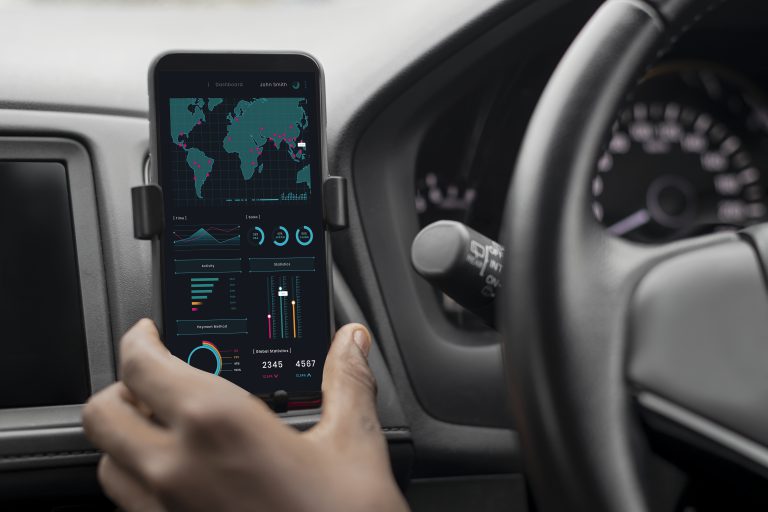Renting Cars App
System database structure :

The component and support files for the central database of this system, we call them as follows:
- Files of the organizational and administrative structure of the facility specialized in leasing, which accommodates the possibility of a holding company consisting of several companies and branching out from each company several activities so that it is possible to structure each activity to a group of regions, divisions, departments or departments.
- Classification files for cities with their neighborhoods and geographical areas.
- Warehouse data file and sorting at the level of branches and regions of companies.
- The rental offices file and linking them to the branches, regions, cities and neighborhoods, with the allocation of a warehouse for each rental office.
- The data files of the main individual tenants, including the financial, administrative and general data for each tenant. This file contains the possibility of electronic archiving of official documents, personal photos and fingerprints of each tenant. This file is linked to the file of the black list of tenants.
Data files of tenants from companies and governmental or private financial, administrative and public institutions for each company. These files also contain detailed data on the employees of each company or institution explaining the administrative, financial and general data for each employee affiliated with the company. These files also contain the possibility of electronic archiving of official documents and photos of the company and all An employee of the company’s employees, while maintaining the connection between the company’s employees and the previously mentioned blacklist.
Files for indexing car items in terms of type, make, model, category, transmission and color.
Index files for types of services related to maintenance, periodic maintenance, consumables and spare parts.
Files indexing the types of contracts and prices for leasing, as well as the file of pricing programs according to car categories.
Detailed item data files, including the possibility of archiving each item.
Detailed data files for the vehicle and its official documents, including the possibility of archiving images of the vehicle and archiving official documents for each vehicle.
Files through which check lists are determined for each type of vehicle, and even check lists for each vehicle, detailing the different types of cases for each element of the check list.
The financial data files of the vehicle depreciation records provide the ability to sort the depreciation expenses for each car in each partial or main financial period, so that we can upload these expenses to the offices and branches.
Files of lease contracts for individuals and their analytical appendices of related transactions.
Files of lease contracts for companies and institutions (framework contracts) and their analytical appendices from the movements associated with each contract.
Linkage of the leasing system with other systems:
The vehicle rental system, with its main files, contracts, and daily financial movements, is linked to the rest of the financial systems, warehouse systems, procurement, fixed assets, and human resources. The financial systems include public accounts, bank accounts, funds and trusts. We explain below the mechanisms and points of interdependence with other systems as follows:
- When defining the records of individual clients or corporate clients, the current asset accounts of clients are determined within their records according to their categories. The accounts of the prepaid revenues are identified in the current liabilities and the revenue accounts of each category of clients, so that the system directs the automatic entries for rental revenues when recording contract payments. Rental through the user in the rental office.
When defining the leasing office records, the user is required to register the account number of the office fund and the general accounts related to this fund (cash in the box and checks in the box), and the user is also required to register the bank account number receiving smart card deposits in each office and the general accounts linked to this bank account, as well The office is linked to the warehouse system for the purposes of transferring and returning vehicles from the central warehouses to the offices and vice versa.
The rental system is linked to the maintenance system automatically in the event of accidents or a breakdown in the vehicle that requires its automatic transfer to maintenance and the opening of a special account for the repair order upon receipt of the vehicle from the rental customer.
Deficits discovered automatically by the officials of rental offices, either in the balances of funds or trusts, or in the kilometers used between the stage of receiving the vehicle from a lessee and the stage of handing it over to a subsequent lessee. Make the necessary accounting entries that prove this procedure.
The possibility of editing debit or credit financial notices, the two parties of which are the office official (employee in the human resources and salaries system) and a hired client (customer accounts system).
The possibility of linking the system to government institutions and departments, such as the “Tamm” system, the “Shumous” system, or any system that will be developed in the future from official departments.
Linking the vehicle records in the leasing system with the vehicle records in the fixed assets system so that we can, through the leasing system, know all the expenses of the vehicle, and for the same purpose, the vehicles are linked to the leasing system with repair orders to the maintenance system, including all items of expenses that were made on the repair order.
Linking the leasing system with the procurement system and the supplier accounts system.
The leasing system is linked to the judicial system, the preventive maintenance system, and the SMS issuance system.







